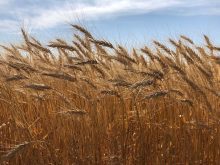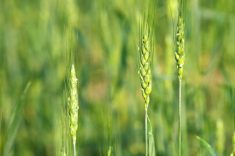CNS Canada — Most winter wheat crops seeded in Western Canada last fall seem to be in good condition so far this spring — but they’re not in the clear yet.
“Not all of the winter wheat is out from the snow cover yet,” said Bruce Burnett, crop and weather specialist with CWB in Winnipeg. “But, I think there have been some encouraging signs with some of the samples the farmers are taking to see if the plants are viable.”
There haven’t been many reports of mortality from winterkill so far this spring, as there was enough snow to keep the crops protected from the extremely cold temperatures that much of the Prairies experienced this winter, said Burnett.
Read Also

Seeds Canada announces Dan Wright as new CEO
Seeds Canada has announced Dan Wright as its new chief executive officer.
Most crops were still in some sort of dormancy in mid-April, though some had lost their winter hardiness to some extent.
“The area that probably has the winter wheat that’s closest to being totally out of dormancy is in southern Alberta because they’ve had some warmer temperatures than on the eastern side of the Prairies,” Burnett said.
But there continue to be overnight temperatures dipping below freezing in many regions of Western Canada, preventing the plants from breaking full dormancy.
“I would expect the probably a little bit later development on this crop unless we get some significantly warmer temperatures just because we’re starting the growing season about one to two weeks later than normal for winter wheat,” Burnett added.
The later start to the growing season will also likely mean a bit of a later harvest than normal, but not nearly as delayed as last year.
Some regions could use some drier weather going forward to help melt the snowpack and get the crops starting to grow, especially north of the Trans-Canada Highway in the eastern part of the Prairies, Burnett said.
Though things are looking good overall so far, there’s still the possibility that the crops that are still covered in a lot of snow could be damaged.
“If we saw lot of freeze and thaw, that kind of damage done to the plants can happen still,” Burnett added.
There are some dry conditions south of the Trans-Canada Highway in Alberta and Saskatchewan, as they had less snowpack this winter. But it’s not raising any concerns yet because the subsoil moisture in the region is adequate.
Flooding isn’t expected to be a major problem this year. But east-central Saskatchewan is an area to keep an eye on as it had the most snow combined with a fair amount of water in the snow, Burnett said.
— Terryn Shiells writes for Commodity News Service Canada, a Winnipeg company specializing in grain and commodity market reporting.















